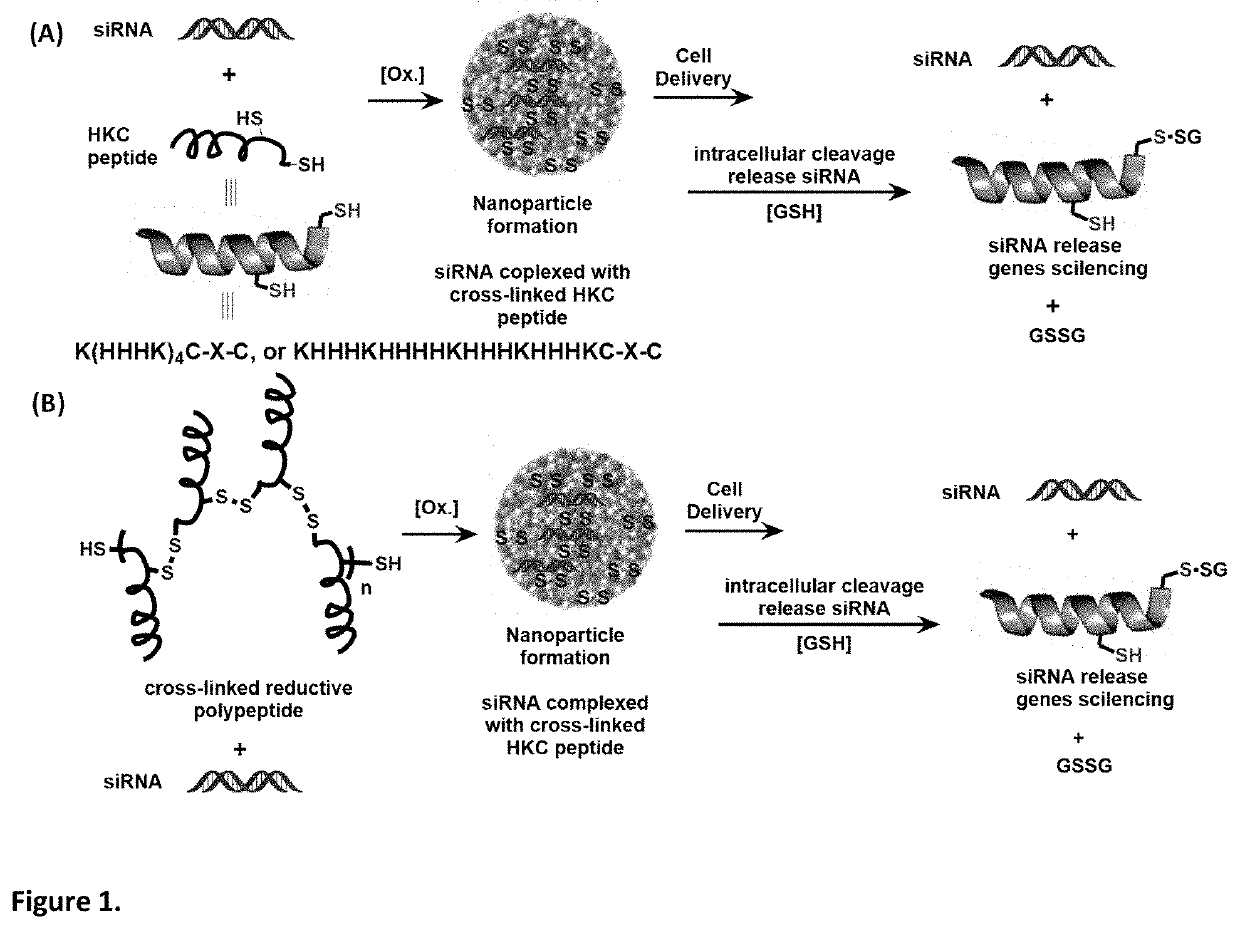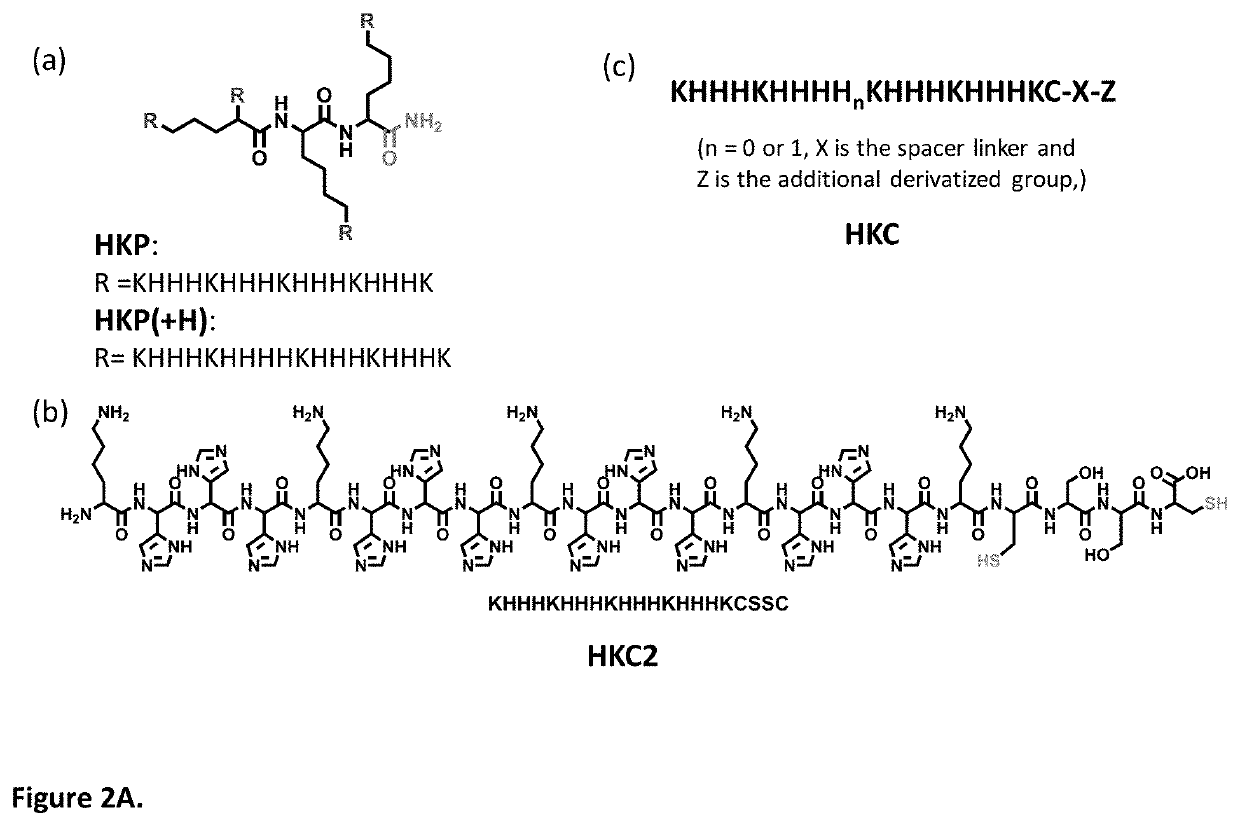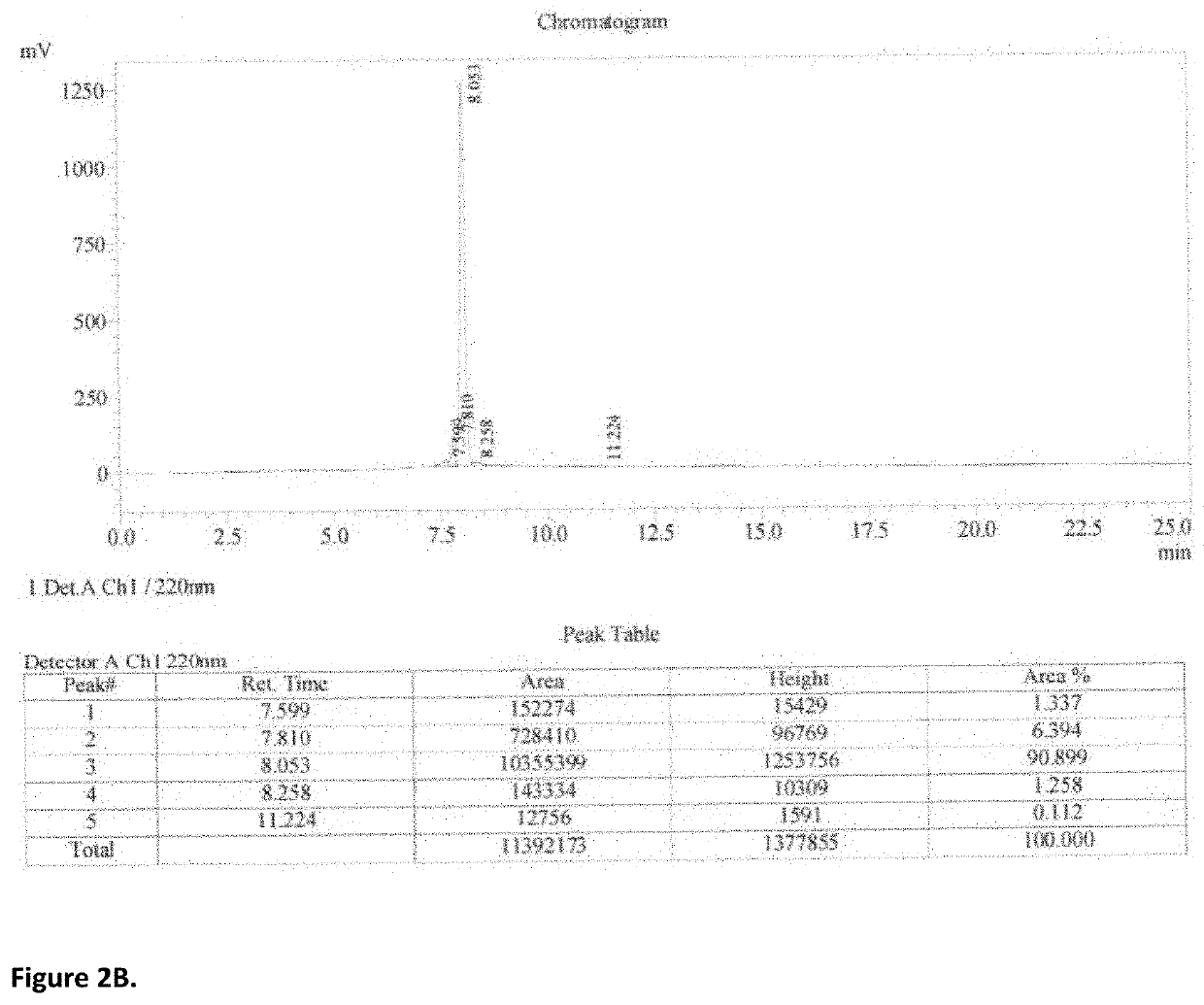Composition and Methods of Controllable Co-Coupling Polypeptide Nanoparticle Delivery System for Nucleic Acid Therapeutics
a delivery system and polypeptide technology, applied in the direction of peptides, peptide sources, fusions for specific cell targeting, etc., can solve the problem of low stability of sirna
- Summary
- Abstract
- Description
- Claims
- Application Information
AI Technical Summary
Benefits of technology
Problems solved by technology
Method used
Image
Examples
example 1
king of the Peptide Through Disulfide Bonds by Air
[0082]An initial study was conducted to examine the polypeptide formation through disulfide bond cross-linking of the peptide. The peptide HKC2 (3.0 mg) was dissolved in deionized water (0.5 mL) at room temperature, and the solution was stored at 4° C. for 10 hours. The resulting mixture was analyzed by reversed phase C-8 HPLC eluted by water (0.1% TFA) and acetonitrile (0.1% TFA), and it shows one peak on the chromatogram at a retention time of 3.3 min. There is no peak eluted at the retention time of 8.053 min representing the starting material-HKC2. It confirms that the peptide can be oxidized and cross-linked by air (FIG. 3).
example 2
king of the Peptide Through Disulfide Bonds by DMSO
[0083]The peptide HKC2 was similarly oxidized by the use of 5% DMSO in water. The peptide HKC2 (3.0 mg) was dissolved in deionized water at room temperature, and the solution was stored at 4° C. for 10 hours. The resulting mixture was analyzed by reversed phase C-8 HPLC eluted using water (0.1% TFA) and acetonitrile (0.1% TFA). It shows one peak on the chromatogram at a retention time of 3.3 min. There was no peak eluted at a retention time of 8.053 min for the starting material HKC2. It confirms that the peptide can be oxidized by DMSO (FIG. 3).
example 3
cle Formation Through Self-Assembly Between Cross-Linked HKC2 Peptide and siRNA
[0084]After validating the cross linkage of HKC2 in water, we investigated the self-assembly between the HKC2 and siRNA (against TGF-β1). First, a concentrated stock solution of cross-linked HKC2 was prepared in water with 5% DMSO. A series of HKC2 in the various ratios with siRNA (wt:wt) (1:1, 2:1, 4:1, etc.) was mixed with siRNA and quickly stirred by vortexing. The size distribution of polypeptide nanoparticles between HKC2 and TGFβ1 measured by Dynamic Light Scattering instrumentation (DLS) was determined after 30 min. From the size distribution, under high concentration between the TGFβ1 (2.5 μg / μL) and HKC2 (30 μg / μL) in mixing ratio from 1:1 to 1:6, a higher nanoparticle size (2000˜3000 nm) and precipitation was observed in some cases. The size remained the same no matter what addition sequence between siRNA and HKC2 was used (FIG. 1).
PUM
| Property | Measurement | Unit |
|---|---|---|
| volume | aaaaa | aaaaa |
| size | aaaaa | aaaaa |
| size | aaaaa | aaaaa |
Abstract
Description
Claims
Application Information
 Login to View More
Login to View More - R&D
- Intellectual Property
- Life Sciences
- Materials
- Tech Scout
- Unparalleled Data Quality
- Higher Quality Content
- 60% Fewer Hallucinations
Browse by: Latest US Patents, China's latest patents, Technical Efficacy Thesaurus, Application Domain, Technology Topic, Popular Technical Reports.
© 2025 PatSnap. All rights reserved.Legal|Privacy policy|Modern Slavery Act Transparency Statement|Sitemap|About US| Contact US: help@patsnap.com



